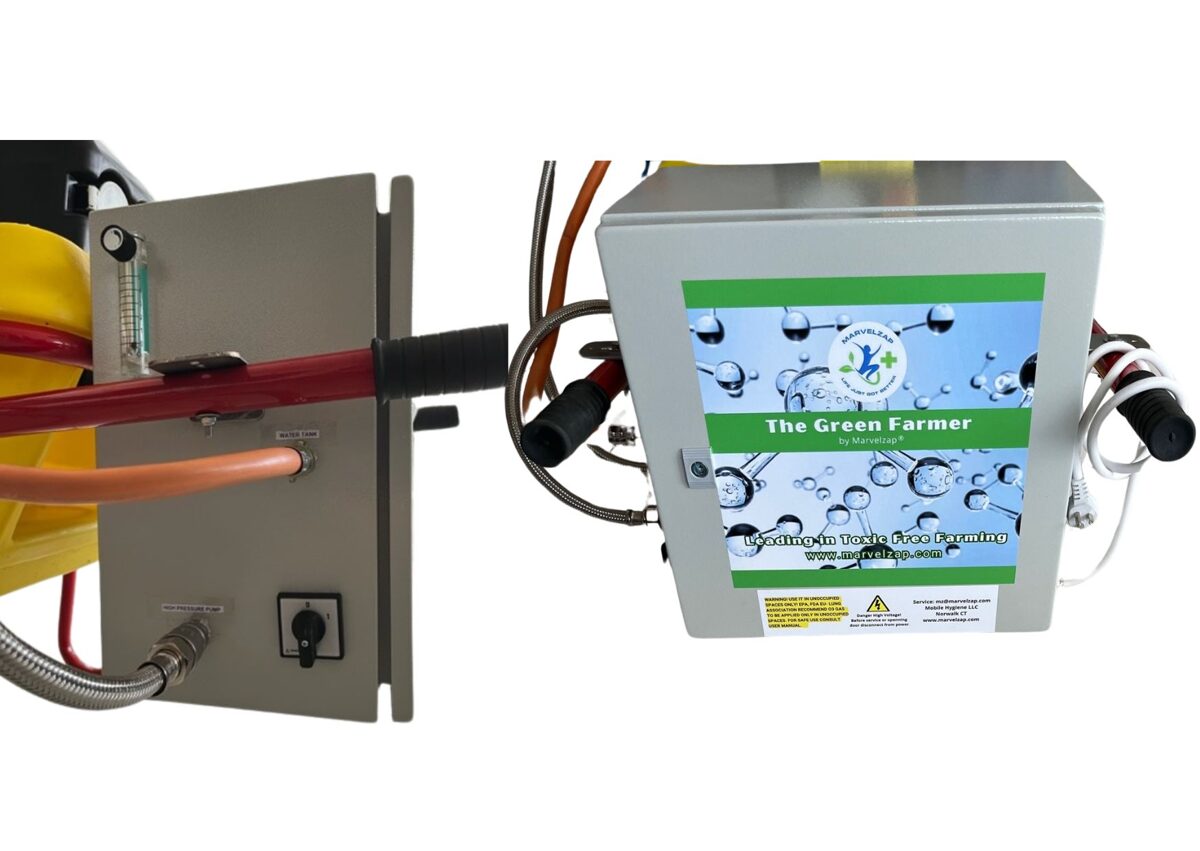Advanced OW Technologies in Farming
The use of pesticides leads to an increase in agricultural production but also causes harmful effects on human health when excessively used. Spurred on by this disturbing facts, we have devoted ourselves to understanding how and when chemicals can be substituted or left out during the plant growing phases. As we have over 15 years experience producing ozone gas based technology for agri sectors and had many discussion with farmers regarding the partial or full replacement of the wide range of chemicals in use.

We bring together essential information on the application of ozonnated water (OW) in agricultural and farming providing an insight into the current state-of-the-art and reviewing established and emerging applications in replacing toxic herbicides, to relieve and deactivate harmful pesticide residues. The chemical and physical properties of ozone are described, along with its microbial inactivation mechanisms. The international regulatory and legislative proposals is addressed, as are the health and safety implications of ozone processing and possible future trends.
Interest in ozone has expanded in recent years in response to consumer demands for 'greener' farming to enhance toxic pathogens reduction in farm products. Ozone, a powerful oxidant, is effective against various kinds of microorganisms in soil treatment on fruits and vegetables in their growing phase. The multi-functionality of ozone makes it a promising herbicide agent. Excess ozone auto revert rapidly to oxygen and leaves no residues in plants from its decomposition Treatment conditions should be specifically determined for all kinds of plants for effective and safe use of ozone.
Some missing elements of the current state of O3 OW farming technology:
First, there is a lack of enough scientific data on the effects of OW treatments in farming. OW in agri sectors is in use 4 continents and contnuously growing. Farmers are not very open about success and user's data. Ozone’s ability to control common fungal diseases is yet not clearly documented, and the efficacy of using ozone to prevent different diseases could vary. The major disadvantage of ozone is that it has a limited residual and works through direct contact, therefore successful pest management may require repeated applications. Howveree the plus side of the repated treatment is, that only water needed! Also when ozone is effective, the dosage requirements and scheduling for safe application takes patient and pratice.